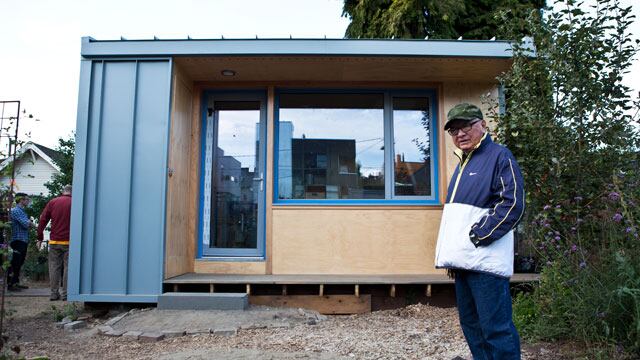SEATTLE — The City of Seattle could significantly pull back its regulations on secondary dwelling units on private property.
Two of the three options currently being studied would allow owners of single-family homes to build more accessory dwelling units, or detached units, with fewer parking regulations. Removing some of the city’s building restrictions would allow for more density within Seattle, which suffers from a lack of affordable housing.
The release of the Environmental Impact Study is timely. It was made public just a day after tensions over a head tax on large businesses to further fund programs for the homeless reached a pinnacle. Many have argued the city needs to focus on creating more affordable housing and pumping resources into housing-first programs, rather than temporary solutions that won't help in the long term.
Options for backyard cottages
Under one option, homeowners would be allowed to build an accessory dwelling unit and a detached unit. An accessory dwelling unit is often called an in-law unit. It is contained within or attached to a single-family home. Detached units are often called backyard cottages and are separate structures in the rear of property lots. Property owners would not have to add off-street parking. The minimum lot size would be 3,200 feet.
Scroll down to continue reading
More news from KIRO 7
- Lindsey Baum found: Missing McCleary girl's remains found in Eastern Washington
- Tacoma police arrest suspect in 1986 child murder case
- Police: 11-year-old girl attacked in mall restroom, father tackles suspect in food court
- How Seattle spent $54 million on homelessness in 2017
- Police: Pit bull attacks Jehovah's Witnesses at front door
A second option would be similar, but allow for two accessory dwelling units — instead of one accessory and a detached unit. One off-street parking space would be required if building two ADUs.
A few significant changes between current regulations and the proposed options would allow 60 percent of the property behind the home to be covered by a detached unit, as opposed to 40 percent. Additionally, the city will look at reducing permitting costs and streamlining the process of building additional units.
The city estimates more than 3,000 additional units would be created under either option.
Cost of living is currently the biggest gripe from people living in the central Puget Sound region. A survey of 2,000 residents found that 29 percent dislike that issue the most — more than traffic.
Meanwhile, the Puget Sound Regional Council estimates the region will grow by nearly 6 million people by 2050, adding an average of 55,000 more people each year.
KIRO








